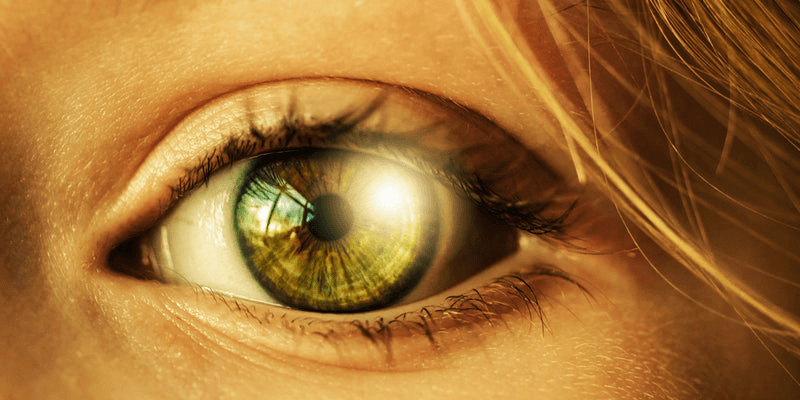I just love smartphone technology. It’s power to the people; putting self-awareness back into the hands of the patient, instead of doctors pretending it’s some kind of mystery ceremony, that only the initiated priests, who have personal contact with the gods, could possibly understand.
Nowadays you can get little apps that will tell you, for example, how your heart rate variability scores. This number is among the most important measures of stress-relation we have. Put simply, a LOW heart rate variability means HIGH stress levels and, sooner or later, disease.
You can carry around a personal ECG (EKG for the Americans), linked to an app, though it has to be admitted interpreting those readings are beyond the layman (pretty difficult, even for doctors). The whole approach is called “wearable technologies”.
Now someone has come up with an app that can detect significant levels of jaundice, or what they call “cases of concern”, with about a 90% level of accuracy.
Who would that apply to? Basically, anyone with any significant degree of blockage in the liver secretion pathways. I went bright yellow, like daffodil, when I had hepatitis as a teen (Epstein-Barr virus or what we sometimes call glandular fever).

Jaundice means the skin and eye whites have turned yellow
Gallstones can do it (the stone blocks the bile-excretion duct leading to the intestine). Any significant liver inflammation or infection, as I have suggested. And of course alcoholics beat up their liver, as we all know.
But perhaps the number one application would be the early detection of pancreatic or liver cancer, especially pancreas. See this cancer is deadly because it is fast-growing and invasive. But it keeps very low-key till it’s too late. You can’t feel anything: your pancreas has no pain nerve endings. You can’t feel a lump, because it’s too deep down inside.
Then one day, the patient suddenly goes yellow, reports to the doctor, tests are done and the diagnosis of pancreatic cancer is made. Typically, the majority of patients survive only a few weeks or months. The official rate is 13% will survive to one year (after diagnosis); only 5% make it to two years.
Even using Donald Kelley’s enzyme program, which can be highly effective, don’t think it’s a breeze shaking off this deadly tumor (Nicholas Gonzalez took over Kelley’s protocols and now his wife is trying to have it re-named as the “Gonzalez Protocol”, which is hardly proper).
Anything that brings the time of diagnosis forward is going to have substantial benefit in patient’s survival: time to get onto a good holistic protocol, which has to be fairly drastic, incidentally. Just don’t take the drug gemcitabine. It’s only worth a few extra weeks of life. That’s not a “treatment” as all, it’s just fleecing the patient’s family finances!
How Does It Work
The app has been developed by researchers from the University of Washington, in Seattle. It may be able to transform “selfies” into a method of catching pancreatic cancer in its very early stages, which in turn could greatly improve outcomes.

Jaundice is an early symptom of pancreatic cancer. It causes yellowing of the skin and sclera, owing to a build-up of bilirubin in the blood. It only becomes readily visible after the disease is advanced.
This is where the new app, dubbed BiliScreen, could make a difference: the smartphone app is able to capture pictures of the sclera in a patient’s eye and produce an estimate of the bilirubin level, even before jaundice is visible.
They tested it out in a clinical study that included 70 healthy volunteers compared findings using the BiliScreen app with results from the blood test that is normally used to assess serum bilirubin. In the study, the app was used in conjunction with a 3-D box that controls the eye’s exposure to light. It gave more accurate results.
The researchers found that the BiliScreen could identify “cases of concern” with a sensitivity of 89.7% and a specificity of 96.8% when used with the box accessory.
The research was published in the Proceedings of the ACM on Interactive, Mobile, Wearable and Ubiquitous Technologies and will be presented September 13 at Ubicomp 2017, the Association for Computing Machinery’s International Joint Conference on Pervasive and Ubiquitous Computing.
It’s not ready for the market yet but I’m sure it won’t be long. First, they are planning a larger study, sometime within the next academic year, with a far larger sample size.
Then there’s the hurdle of the FDA for us Americans. The rest of the world can go forward in the meantime.
Eyes as a Gateway
Look into my eyes,
You will see
What you mean to me
Search your heart
Search your soul
And when you find me there, you’ll search no more
… goes the lyric to the 1991 Robin Hood movie theme song by Bryan Adams.

Bryan Adams, who wrote a beautiful lyric “Everything I do”
We’ve called eyes “the windows to the soul” for centuries.
The eyes are also a really interesting gateway into the body: tears can tell you how much glucose you have, sclera (the whites) can tell you how much bilirubin is in your blood, popping eyeballs might mean hyperthyroid disease, and even metastatic cancer may show up first in the eye! The two most common cancers that spread to the eye are lung cancer in men and breast cancer in women.
Eye doctors can diagnose all sorts of diseases and medical conditions by looking at the retina, the light-sensitive tissue at the back of the eye, including AIDS, blood pressure, diabetes and glaucoma.
This latest idea relies on smartphone cameras being able to take high-definition pictures with accurate color rendering.
The human eye of even a skilled doctor can’t recognize jaundice till blood levels of bilirubin have risen to around 3 mg/dL. However, levels higher than 1.3 mg/dL are a cause for clinical concern. Therefore, the researchers note, there is a “detection gap” ? bilirubin levels of 1.3 to 3.0 mg/dL will be missed unless a blood test is carried out, and that is rarely done without sufficient reason.
Another important point is that bilirubin levels vary over time. The authors point out the bilirubin level might exceed normal values at one measurement but then subsequently return to normal, owing to natural variation. If you happen to draw blood at the time when the value is low, you might miss the fact that there is a real problem.
The BiliScreen app uses the smartphone’s built-in camera to collect pictures of the eyes over time and then range them, using its programmed software. The app calculates the color information from the sclerae, which is based on the wavelengths of light that are being reflected and absorbed, and then correlates it with bilirubin levels, using machine-learning algorithms.
Unlike skin color, which varies considerably across different populations, the changes in the sclera are more consistent across all races and ethnicities.
There is one other important possible use. If the patient does ALREADY have pancreatic cancer, the BiliScreen will be able to monitor progress—in this case falling levels of bilirubin and diminishing jaundice!
Let’s hope you never see the yellow. It’s always bad news, even if not pancreatic cancer!
You can get my liver book here!
SOURCE:
Proceedings of the ACM on Interactive, Mobile, Wearable and Ubiquitous Technologies. 2017;1:art20.
The post Your Smartphone a Jaundice Meter? appeared first on Dr. Keith Scott-Mumby.
